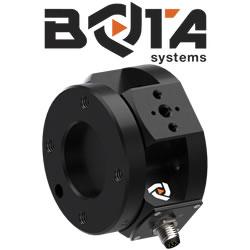Microscan to Present Three-Part Webinar Series on Machine Vision Basics
Microscan announces that its Machine Vision Product Manager, Dr. Jonathan Ludlow, will present an educational webinar on the "Definition & Applications of Machine Vision", part one of a three-part Introduction to Machine Vision Webinar Series hosted by Microscan.
RENTON, WA, March 2012- Microscan, a global technology leader in barcode, machine vision and lighting solutions, announces that its Machine Vision Product Manager, Dr. Jonathan Ludlow, will present an educational webinar on the "Definition & Applications of Machine Vision", part one of a three-part Introduction to Machine Vision Webinar Series hosted by Microscan. The presentation and live question and answer session are free to attend, and will take place online on March 13, 2012 at 10am PDT/1pm EDT.
Machine vision inspection plays an important role in achieving 100% quality control in manufacturing, reducing costs and ensuring a high level of customer satisfaction. This webinar series on machine vision basics, ideal for those who are new to the technology, will explore the core principles of machine vision and its common applications in processing operations, and will demonstrate why manufacturers are increasingly adopting this powerful technology. Part two of the series, "Why Use Machine Vision", will be presented on March 20, 2012, and will focus on machine vision benefits and how it can be used to increase a manufacturer's ROI. The third part in the series will discuss the key components and technology used in today's vision systems, and will be held on March 27, 2012.
Webinar presenter Dr. Jonathan Ludlow, Machine Vision Product Manager, has been instructing machine vision and lighting overview courses for 30 years, since the early beginnings of the technology. He has been active in machine vision product development for many years, has authored papers on the application of machine vision in semiconductor packaging and electronic assembly, holds several patents relating to inspection systems, and is a regular speaker at machine vision symposia.
To register for part one of the machine vision basics webinar series, "Definition and Applications of Machine Vision", visit http://info.microscan.com/ITMVPart1_RegistrationPage.html.
About Microscan
Microscan is a global leader in technology for precision data acquisition and control solutions serving a wide range of automation and OEM applications. Founded in 1982, Microscan has a strong history of technology innovation that includes the invention of the first laser diode barcode scanner and the 2D symbology, Data Matrix. Today, Microscan remains a technology leader in automatic identification and machine vision with extensive solutions for ID tracking, traceability and inspection ranging from basic barcode reading up to complex machine vision inspection, identification, and measurement.
As an ISO 9001:2008 certified company recognized for quality leadership in the U.S., Microscan is known and trusted by customers worldwide as a provider of quality, high precision products. Microscan is a Spectris company.
Microscan Contact
Corporate Headquarters, U.S.
Cathy McBeth, Global Commercial Marketing Manager
+1 425-203-4972; cmcbeth@microscan.com
Featured Product

